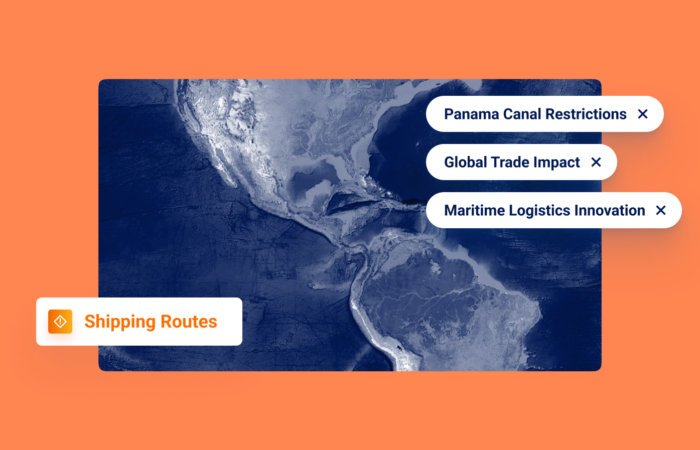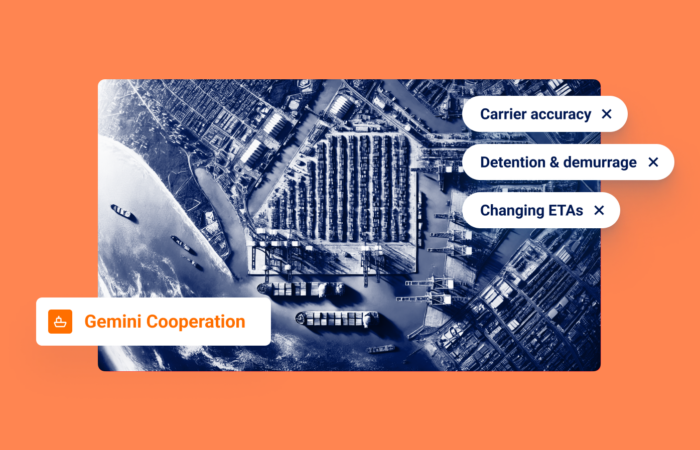Top six reasons ocean freight ETAs are broken

What’s inside?
Freight forwarders (FF), beneficial cargo owners (BCOs), and other organizations throughout the vast ocean freight ecosystem are drowning in container data and they find it exceedingly difficult to manually track containers and vessels.
That is one of the six reasons that explains why the process of obtaining a timely and accurate ocean freight container estimated time of arrival (ETA) and then using it to manage the customer relationship can be so frustrating for FF and BCO personnel.
1. No single source of truth
Who can be trusted to provide updated and accurate ETA information? Operators are constantly processing information from a large variety of sources, including:
- Carriers
- Vessel finders
- Tracking providers
- Port operators
- Customs systems
And these data streams are often inconsistent, or even contradictory, resulting in multiple ETAs. Port operators tend to be the most accurate (it makes sense when you consider that they are obviously in charge of when vessels are going to berth), but they usually only look ahead up to six days or so.
Carriers usually publish optimistic schedules, primarily to remain competitive – none of them want to be the first to offer a shipment length that’s 50% or so longer than the rest, fearing that would scare customers away.
2. Data overwhelm leads to missed communications
A large portion of any operator’s day is spent looking through these different data sources in hopes of an accurate ETA. This frequently results in 150-200 emails daily! Actually, that’s a conservative estimate…
Important information is easily buried. Carriers try their best to be proactive, but a lot of information never reaches the desk of the people who handle shipments. Under the pressure of customers demanding answers, operators are often left with no other choice but to offer their “best guesses.”
3. Tracking large shipments is time consuming
Tracking individual containers is time intensive – operators handle approximately 75-100 shipments monthly. One Bill of Lading (BoL) could have ten containers on it and what if transshipments are involved? Sometimes, half the containers from a single shipment get moved to one vessel during a transshipment, while the other half are placed on another. This leads to splitting the bill of lading halfway through the voyage, complicating the picture and creating additional data points.

4. Lack of industry standardization
There is no industry standard for basic definitions, such as how to define ETA. Some organizations define an ETA as the vessel’s arrival, but for others that term means the point at which the vessel berths. A vessel can arrive at a port and then sit idle for four days before berthing, so the difference is significant!
5. Disrupted planning because of uncertainty
Much of the workflow for freight forwarders, especially for import, is triggered based on a certain ETA (often 10 days before arrival). Without an accurate ETA, it’s difficult to start planning. If FF and BCO employees plan too early, there is a chance that the circumstances will significantly change, meaning previous efforts were a waste of time. But if they plan too late, they may lose port availability.
6. Lack of explanations harm the customer relationship
ETA changes rarely come with an explanation, leading operators to troubleshoot extensively. They can try calling the carrier, but it is difficult to get through. Email inquiries usually only receive a response towards the back end of seven working days. Again, this leads to operators having to make a best guess. And an ETA change could be up to two weeks! Customers always want to know “why?” regarding delays and get angry when there is no suitable answer. The lack of accountability up the chain harms customer relationships for FFs, BCOs and other maritime organizations.
When it comes to ocean freight visibility and ETAs, it’s clear that multiple parts of the process are broken and the industry is ripe for disruption. Fortunately, a Maritime AI™ revolution is already underway…












